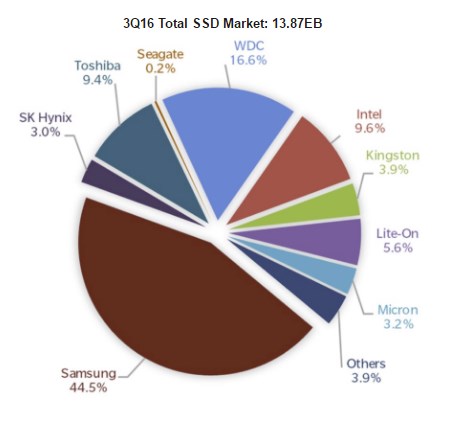The reason for the shortage is the increased demand from the smartphone market and the adoption of SSDs in laptops. This got further compounded by the slow transition to 3D NAND, Samsung is leading the market here but all others have suffered setbacks due to poor yields and production difficulties.
Tom's Hardware points out SSDs are a victim of their own success and unfortunately it looks like HDDs might enter a short-supply situation as well. In this case, it's because companies are cutting production to the bone and because companies are relocating resources to focus on the more profitable high-capacity enterprise segment. A combination of component shortages and production cuts will likely result in HDD supply that won't meet demand, and thus in higher prices.

SSDs to get 20-25 percent more expensive?
If you're planning to buy a solid state disk it may be a good idea to hurry up as analysts predict 20 to 25 percent increases in SSD pricing over the next few months. Many third-party SSD makers have build up big NAND stockpiles, which helped to cushion the recent price hikes. But with stockpiles running empty, consumers need to expect higher prices in the short run. It will likely take until the end of 2017 until the shortage situation is resolved.
Pricing of some memory products will increase harder than others. For example, less desirable customers like the USB flash storage segment are already seeing sharper than average increases as manufacturers are trying to flog the USB-class NAND as SSD worthy.
Watch out for the new, slow SMR HDDs
The site also issues a warning about the move to shingled magnetic recording (SMR) in the HDD market. This new technology makes hard disks cheaper to produce than normal perpendicular magnetic recording (PMR) HDDs, but the downside is the SMR HDDs are significantly slower than PMR HDDs. The move to SMR HDDs makes the performance difference with SSDs even bigger than it already was, and worst of it all, some HDD vendors aren't even labeling these drives properly so you have no idea what you're buying:
It's easy to see why SSDs are winning in notebooks, and the HDD vendors are making matters worse by shipping 2.5" SMR HDDs for the "performance" laptop market. The short version: SMR is the slowest thing ever to happen to HDDs (and they were slow already). SMR HDDs are cheaper to produce than the speedier normal PMR HDDs, but the OEMs likely won't pass down those savings to the end user, and SMR is absolutely abysmal for running an operating system.